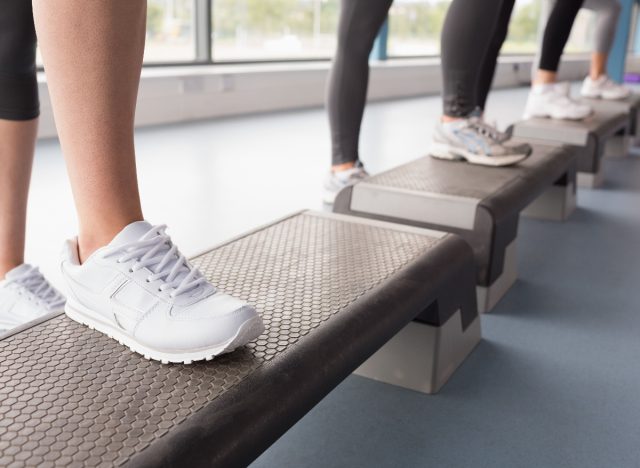5 Daily Exercises To Improve Muscular Endurance as You Age
As you get older, it's natural to experience creaky joints, stiff muscles, and aches and pains. However, neglecting to maintain muscular endurance—your muscles' ability to perform repeated contractions against a resistance for an extended period—could spell trouble for your golden years. Fortunately, muscular endurance exercises can help fix bad posture, improve stability, enhance your muscles' aerobic capacity, and maintain your ability to carry out daily activities, according to ACE Fitness. That's why we're here to help you out with five of the best exercises to improve muscular endurance as you age.
Note: Don't confuse muscular endurance (or stamina) with muscular strength. Muscular endurance allows you to do physical activities for longer periods, while muscular strength is your ability to lift or move heavy objects. Essentially, the more stamina your muscles have, the more reps you can do. Research shows that moderate-load muscular endurance strength training is an effective strategy for combating the age-associated loss of strength and muscle mass. Also, engaging your muscles through regular exercise is essential for maintaining their functional capacity as you age. Good-functioning muscles can improve your balance and skeletal structure, reducing your risk of falls and injury, according to the National Institute on Aging.
If you're concerned you've missed the boat on this, we have good news: It's never too late to improve your muscular endurance. To help get you started, we chatted with Margie Young, CPT, a Life Time Champions ARORA certified personal trainer, who shares her top five exercises to improve muscular endurance and stamina as you age.

An excellent movement for boosting muscular endurance is the hip hinge, where you shift your weight to your heels and push your hips back against a wall while hinging forward at the hips. (You can also perform this exercise with suspension straps.)
"With the hip hinge, you're not bending forward; you're hinging at the hip," Young explains. "Start by standing a few inches in front of (but not touching) a wall. Next, keep your feet parallel and under your hips, your core tight, and simply touch your butt to the wall while bending forward. Then, squeeze your glutes to stand back up."
The hip hinge will increase your range of motion (ROM) and allow you to perform daily activities with ease. So, next time you bend over to pick up the laundry basket, use the hip hinge form to save your lower back.

A straightforward exercise that can be done anytime, anywhere is the body-weight squat. To perform these, Young explains, "Sit down and stand up back up, remembering to push through your heels. Multiple sets and repetitions of bodyweight squats help maintain muscle balance and improve functional movement." Perfecting bodyweight squats will come in handy the next time you're squatting down to pick up the kids' toys for the seventh time in a day.

Another great exercise for muscular endurance is the plank. This static hold has several variations that strengthen your core, improve your posture, reduce back pain, and boost coordination. "Plank holds aren't just great for the core, they're great for the entire body and anyone can do them," says Young. "Plank variations include going from a wall to a countertop, the bed or couch, and even the floor. Add intensity by alternating glute-activated leg lift holds while planking."

